A munitions site investigation follows the same basic steps as an investigation of environmental sites under the national “Superfund” program. The first step in such an investigation is called a Site Inspection and is conducted to determine if military munitions or munitions-related debris are present and if there are potential environmental or safety risks.
Initially MCIEAST - MCB Camp Lejeune was leading the investigation, working in partnership with the Naval Facilities Engineering Systems Command Mid-Atlantic, the U.S. Environmental Protection Agency, and the North Carolina Department of Environment and Natural Resources, and in consultation with private property owners and all other interested parties. As of 2023, Naval Facilities Engineering Systems Command Mid-Atlantic has taken the lead, while we continue to work under the same partnership.
Investigations Completed to Date
From October 2009 to May 2010, Camp Lejeune conducted an initial site inspection of the former off-Base SDZs.
First, a digital geophysical mapping (DGM) survey – including an aerial survey using helicopters to fly over the entire 1,600-acre investigation area and a terrestrial survey of 27 acres of accessible land – identified the locations of over 4,000 metallic objects (called “anomalies”).
DGM technology does not distinguish between munitions and other metallic objects that are commonly found in the coastal environment, such as anchors, crab pots, soda cans, pipes, and signs. Therefore, follow-on “intrusive” investigations – digging up selected metallic objects – were conducted, so that munitions experts could determine if they were munitions or munitions debris.
Intrusive Investigation of Bear Island
In November 2010, the Base conducted a combined geophysical survey and intrusive investigation of a 198-acre area on the south end of Bear Island, which is part of Hammocks Beach State Park. This area was the highest priority, because many people visit the park.
An unexpended aircraft flare, which had not fired, was found in a heavily vegetated area. The flare was moved to a disposal pit about 75 feet away and safely destroyed by controlled detonation. Several munitions debris items were found, but none presented an explosive hazard.
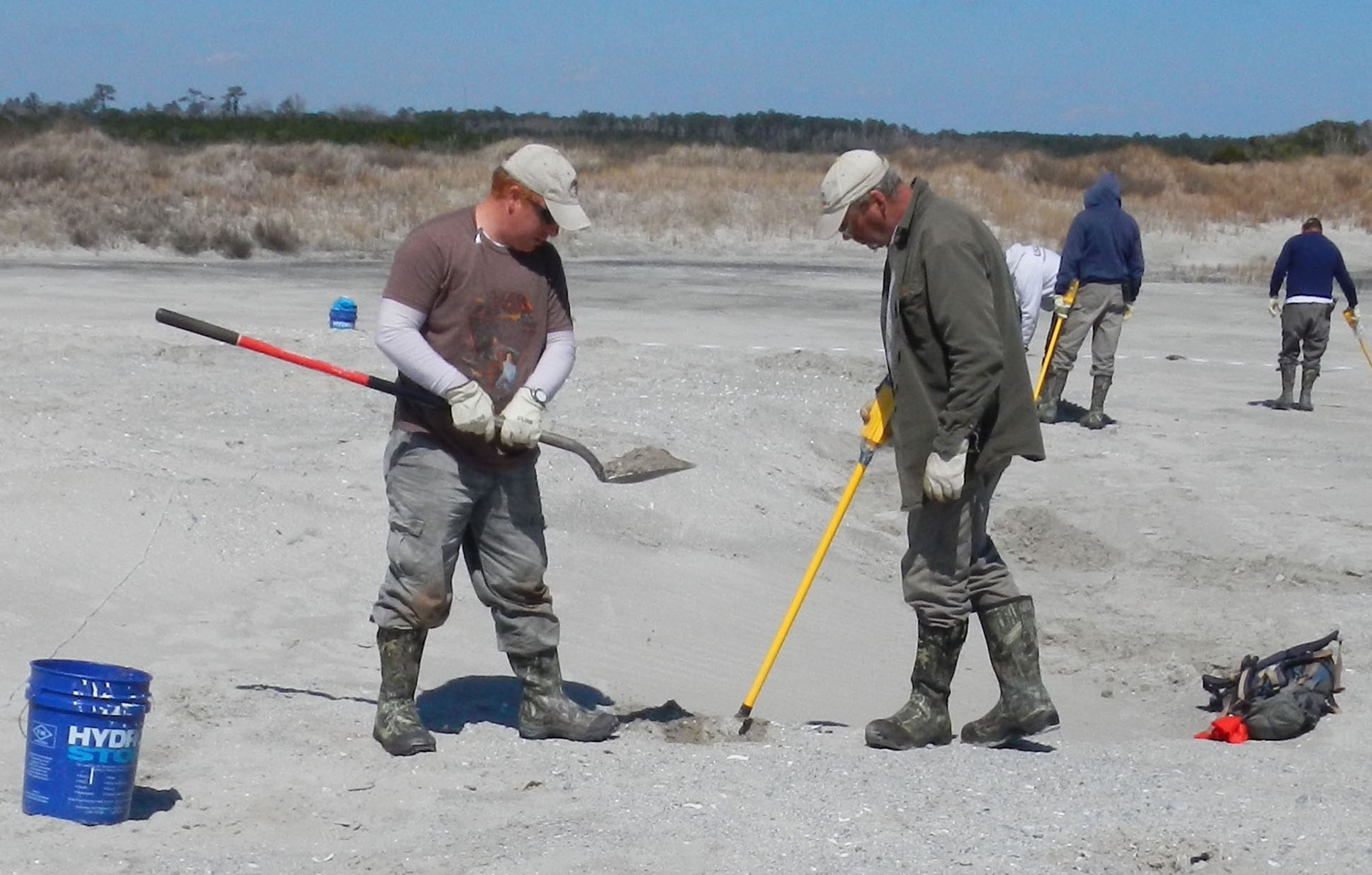 |
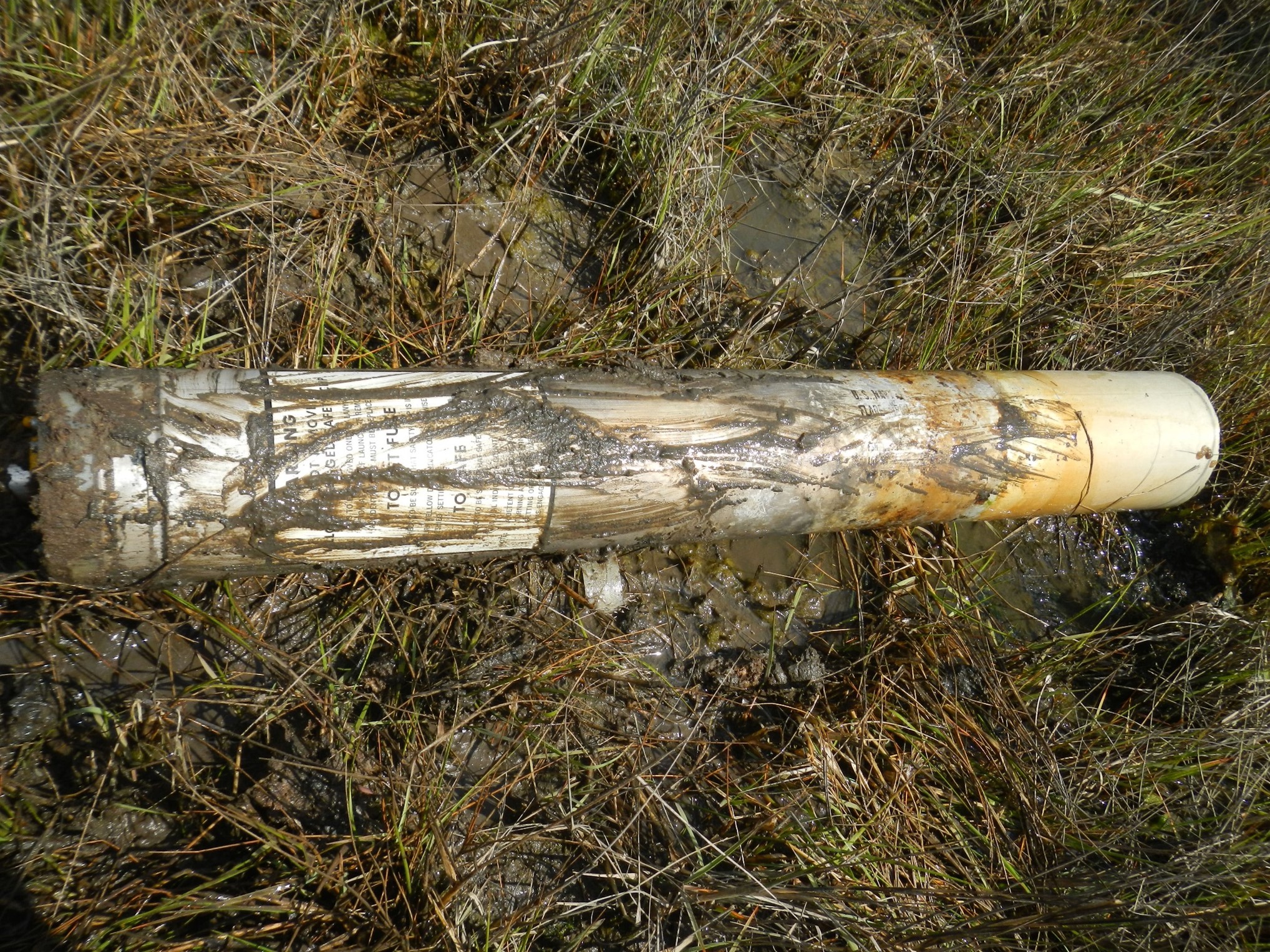 |
| Locating and Digging Up Anomalies |
Aircraft Flare |
Intrusive Investigation of Remaining Area
From March 2013 through May 2013, MCIEAST - MCB Camp Lejeune completed a follow-on intrusive investigation of selected anomalies in the remainder of the investigation area. During the intrusive investigation, the team used hand-held metal detectors to find each anomaly and then dug it up by hand for identification.
The team dug to a maximum depth of 3 feet below the ground surface. Digging stopped once a hole filled with water, because it became too difficult to see and safely identify the object.
Investigation Results
Six additional munitions items and 79 munitions debris items were found in 2013, primarily in areas that were difficult to access. All the munitions found in the 2013 investigation were near Browns Island, close to the former target area for Rocket Range #1 (see map below).
In the rest of the investigation area, only munitions debris determined to be safe and other common metallic objects (crab pots, boat anchors, beverage cans, and pipes) were found. Most of the munitions debris was found on Sanders Island and in the marsh just north of Browns Island, as shown on the map below.
The munitions items found in 2013 were:
- Four inert practice items that did not contain explosives (three 2.75-inch rocket warheads and one 5-inch rocket warhead)
- Two items filled with explosives (one 2.75-inch rocket warhead and one 5-inch rocket warhead)
Munitions items were moved to disposal pits in a remote location and safely destroyed by controlled detonation. Munitions debris, non-explosive items, and other metallic objects were collected and recycled, in accordance with state and federal laws and regulations.
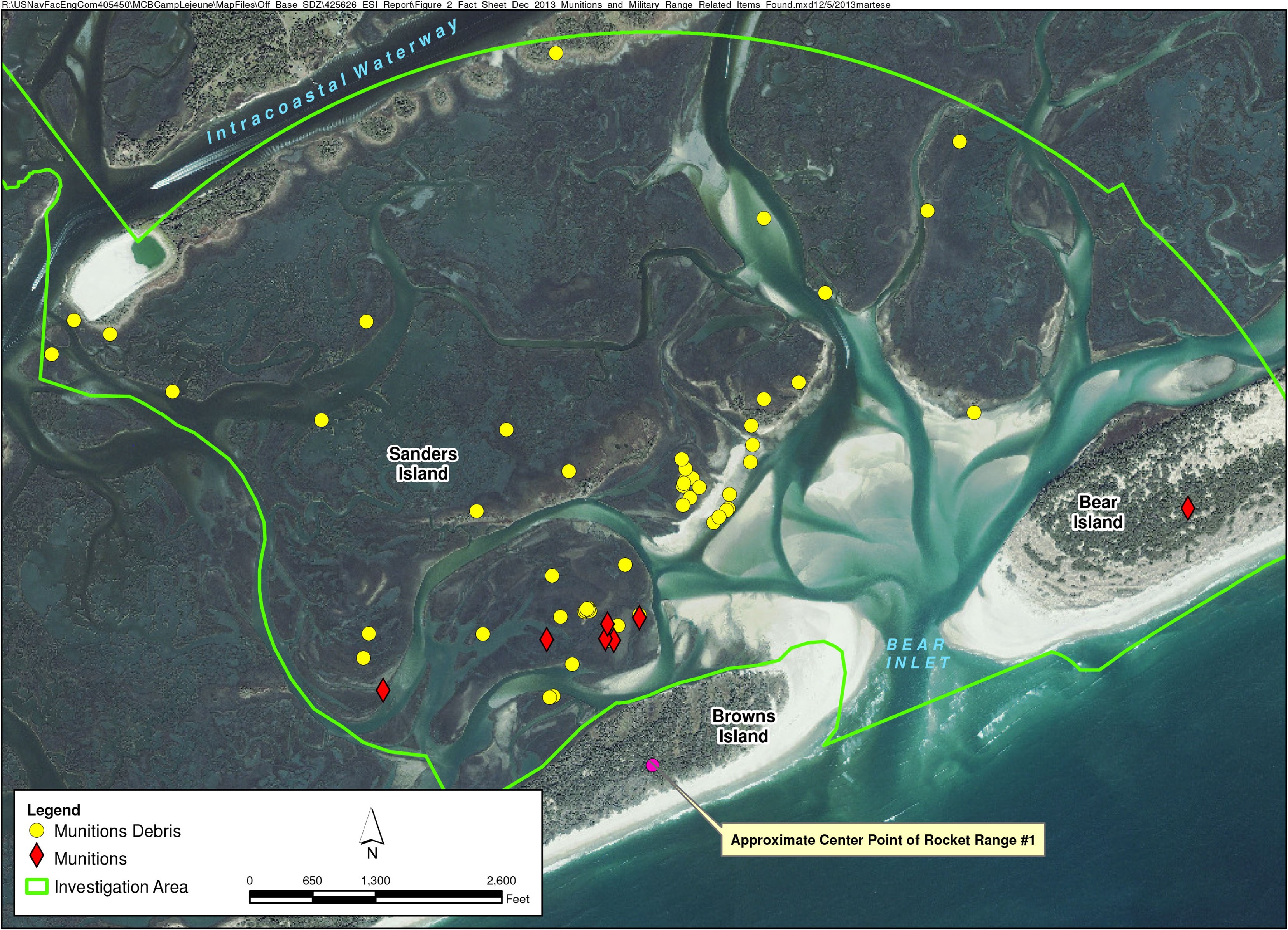 |
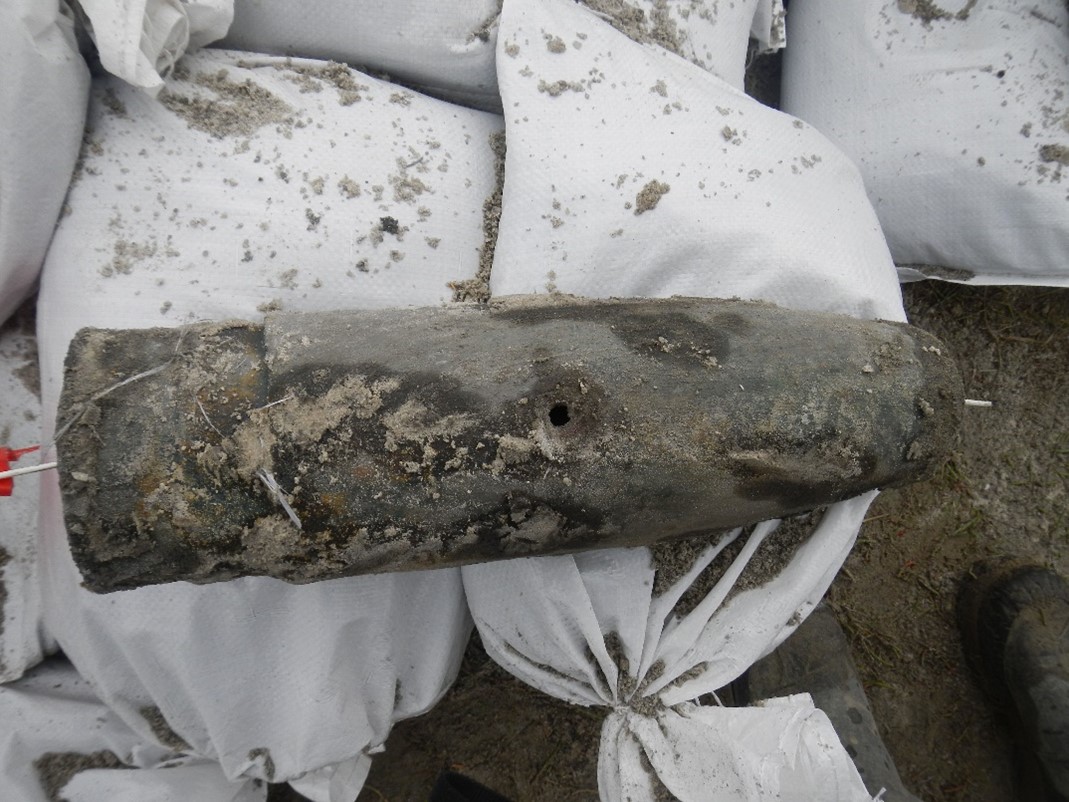 |
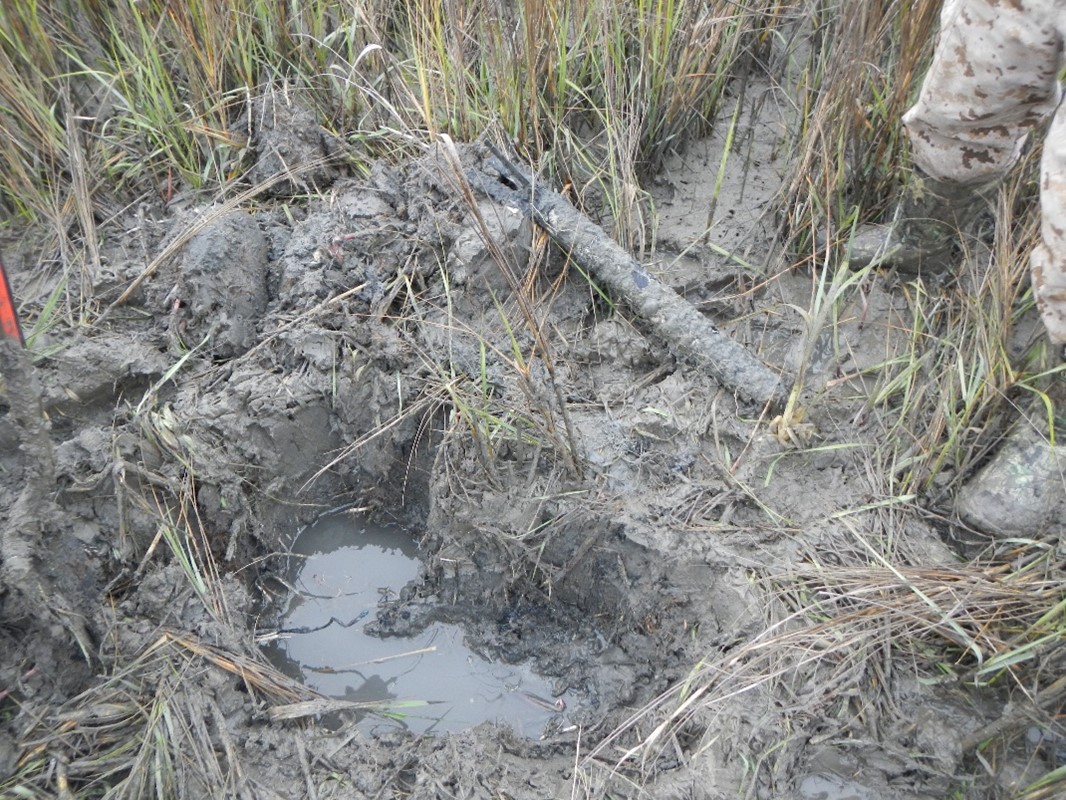 |
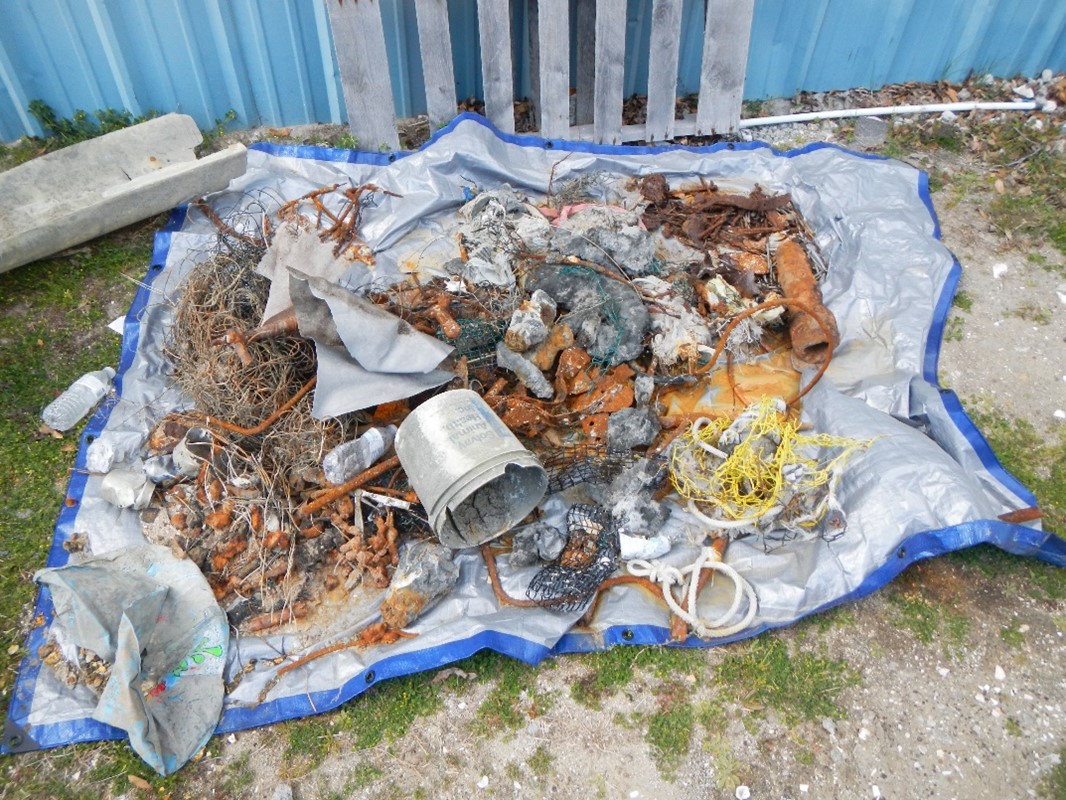 |
| Rocket Warhead |
Rocket Motor |
Common Metallic Objects |
Common Metallic Objects |
Environmental Sampling Results
During the 2010 investigation, the team also collected samples from soil, surface water, groundwater, sediment and pore water (water that is between sediment particles) in the investigation area.
The samples were analyzed for explosives residues, perchlorate (a constituent in rocket propellant), and metals, to evaluate whether contamination related to the former range activities was present.
Explosives residues were not detected in any samples. Perchlorate was detected in groundwater samples at low levels, which were well below the regulatory screening level.
Installation of Warning Signs
In November 2014, 17 unexploded ordnance (UXO) warning signs were installed along the banks of the waterways within and around the perimeter of the Site UXO-31 area. The warning signs are posted to inform boaters of the possible risk for munitions identified by the investigation.
This area has been incorporated into the Brown’s Island Policy. The existing Brown's Island restricted area is outlined in red on the figure below. The Brown’s Island Policy is available here.
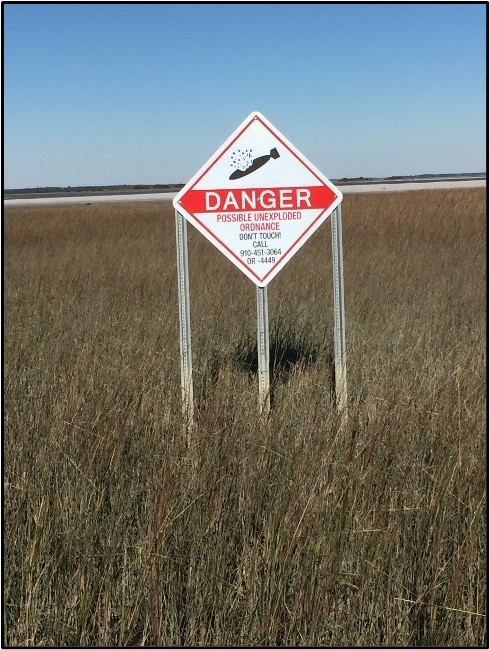
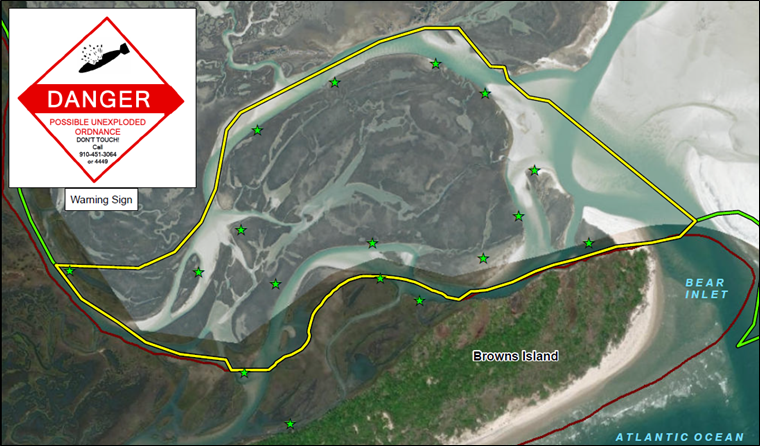
Site inspection of UXO-31
In 2023, the Preliminary Assessment/Site Inspection (PA/SI) Report for Site UXO-31 was finalized for the smaller 176-acre area where munitions of concern were found. This report confirmed previous findings and ensured the Site UXO-31 boundary remains valid and that no physical or legal changes to the land or other emergency responses have occurred at the site in the last 10 years. A remedial investigation was recommended to evaluate UXO presence at Site UXO-31 to confirm the current site boundary is protective.
Conclusions
Based on the intrusive investigation and sampling investigation results, the Base has evaluated potential future hazards. The Expanded Site Investigation Report concluded that:
- The underwater anomalies that were not intrusively investigated are expected to be like those that were investigated.
- Buried munitions items are likely to remain in the same locations but could be exposed over time by storms and tides.
- Because the munitions and related debris were found in areas that are difficult to access, people are not likely to accidentally encounter them.
- Given the types of munitions that were found, it is unlikely that casual contact, such as stepping on an item, would cause an explosion. However, such items might explode if they were struck with a rock or tool.
- Illumination flares from Base training activities may continue to land in areas outside of, but close to, the Base boundaries near active training areas.
- Based on the results of the environmental sampling, off-Base SDZ activities have not resulted in release of munitions constituents to the environment. There is no unacceptable risk to humans or the environment at the site from exposure to soil, surface water, groundwater, sediment, or pore water.
Click here to download the "Expanded Site Inspection Report-Off-Base SDZs" Report (May 2014).
For available documents on UXO-31, please visit the following link to access the NAVFAC Administrative Record files:
https://www.navfac.navy.mil/Divisions/Environmental/Products-and-Services/Environmental-Restoration/Mid-Atlantic/Camp-Lejeune-MCB/Administrative-Record/
Search for "UXO 000031” for relevant documentation.